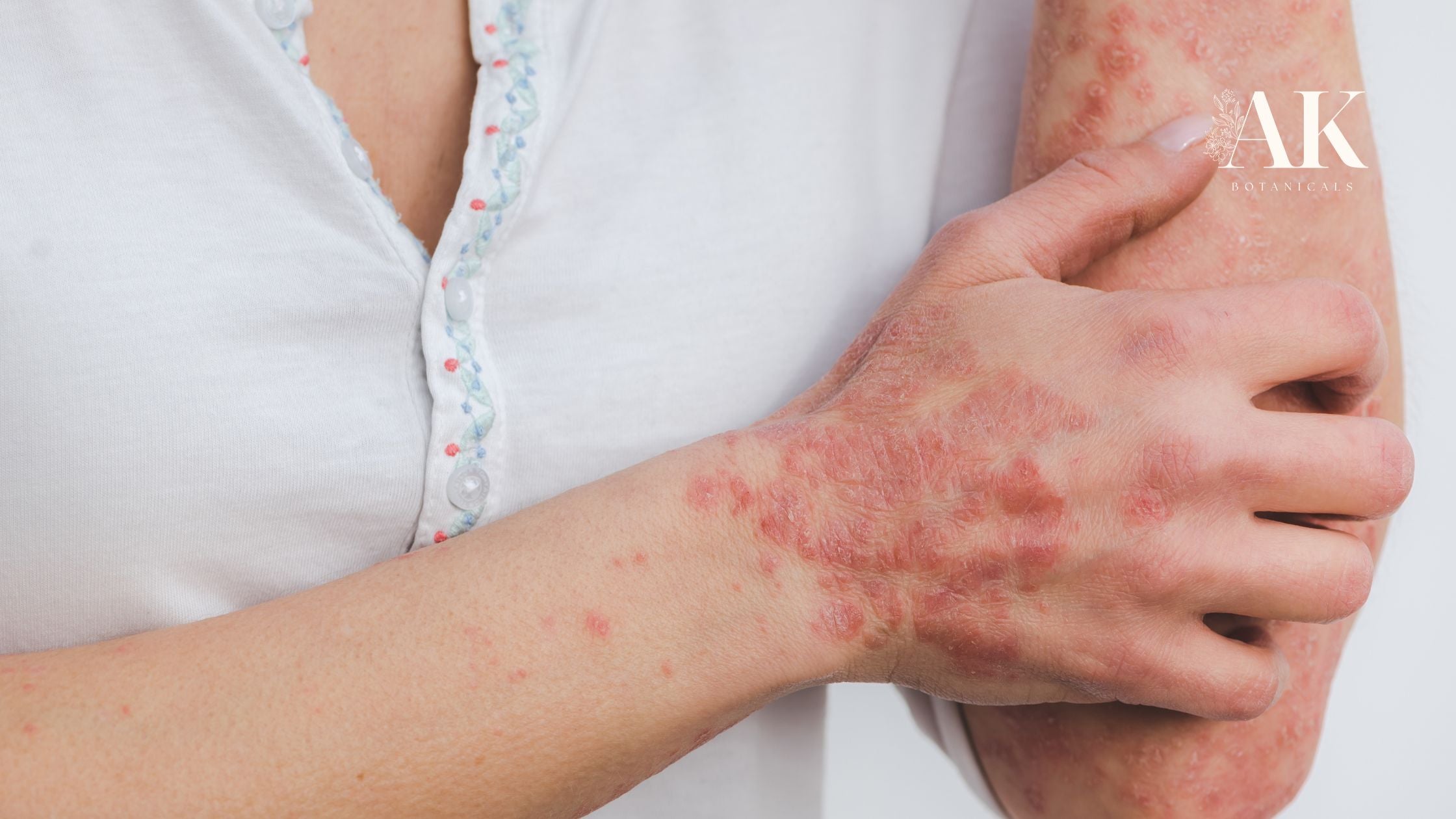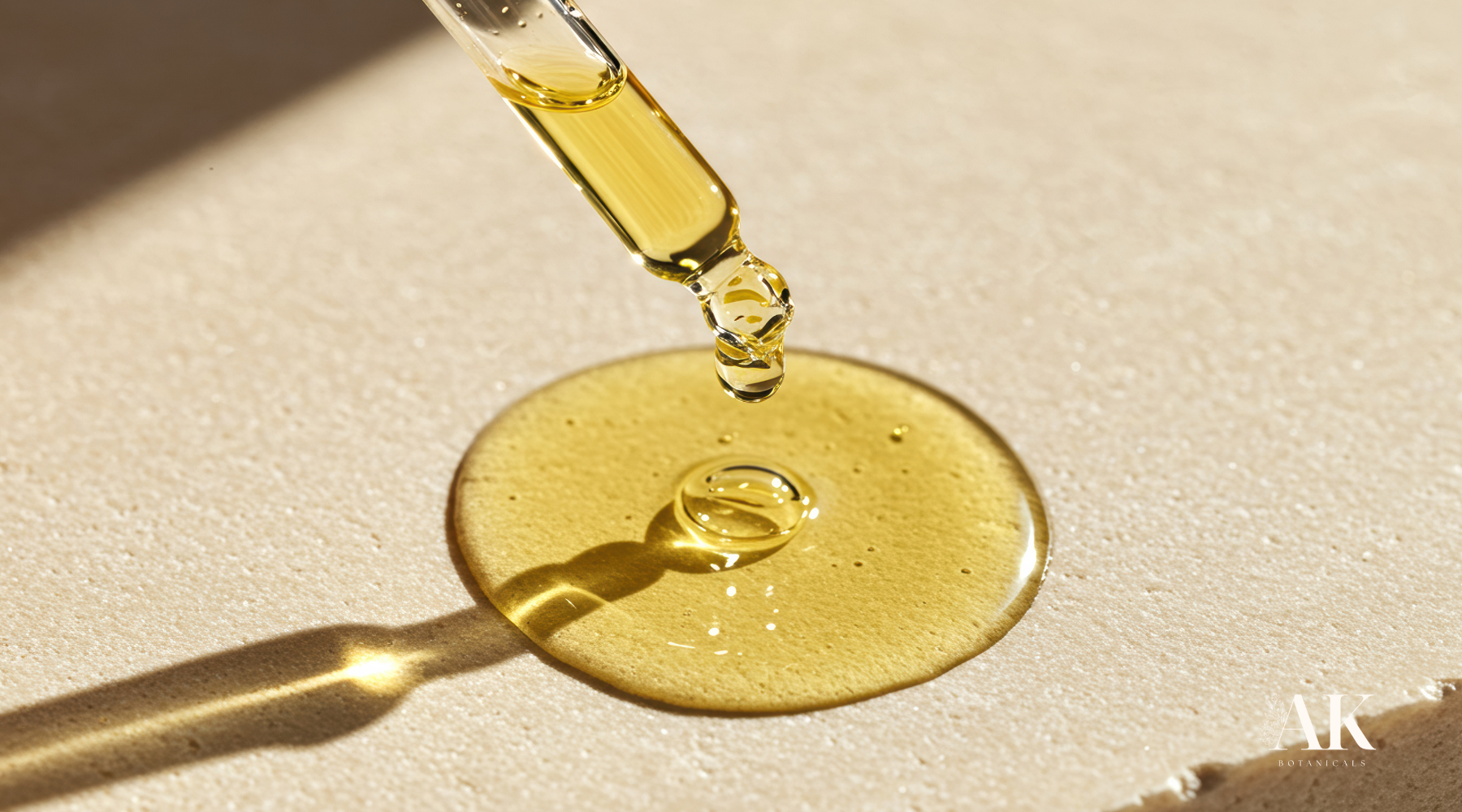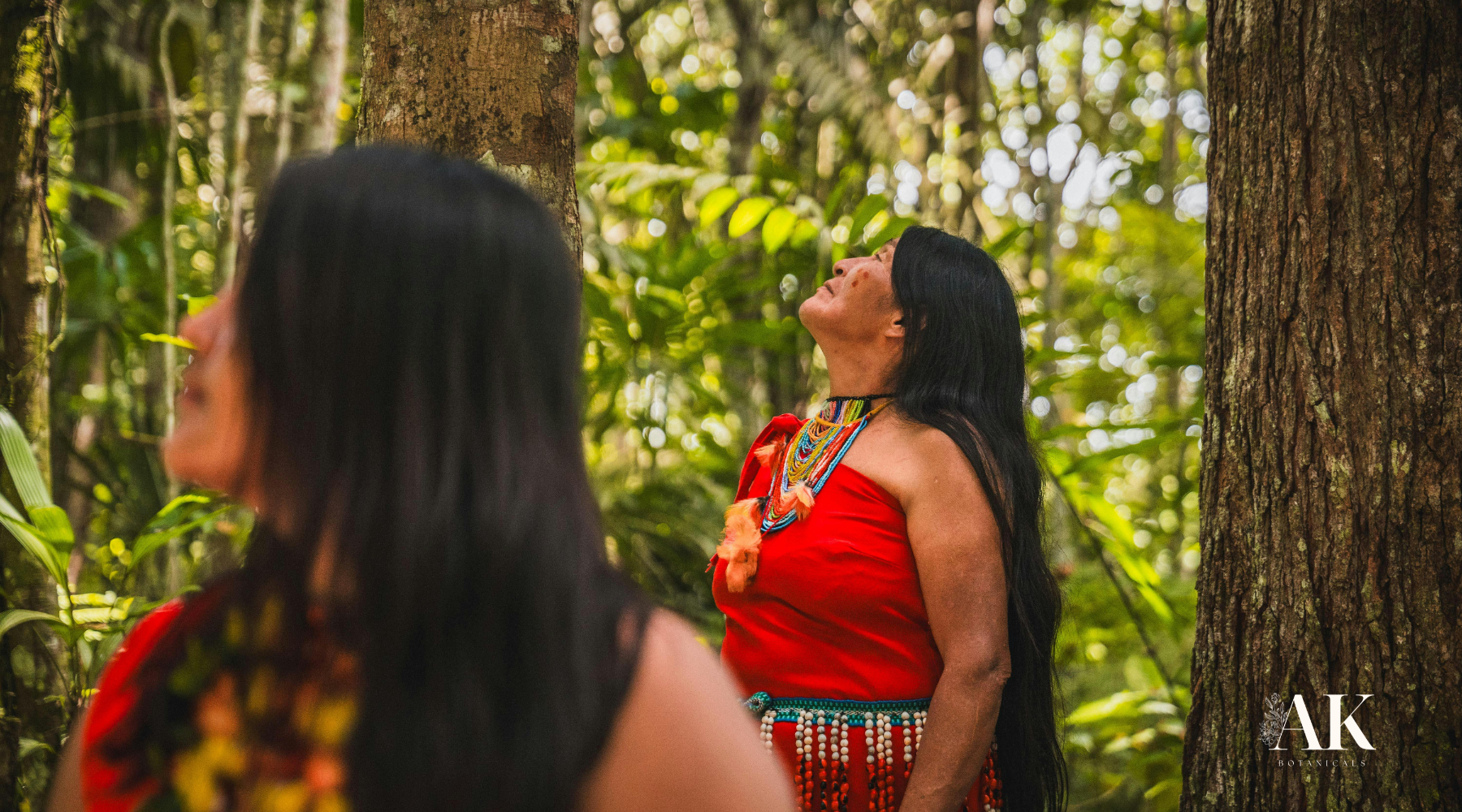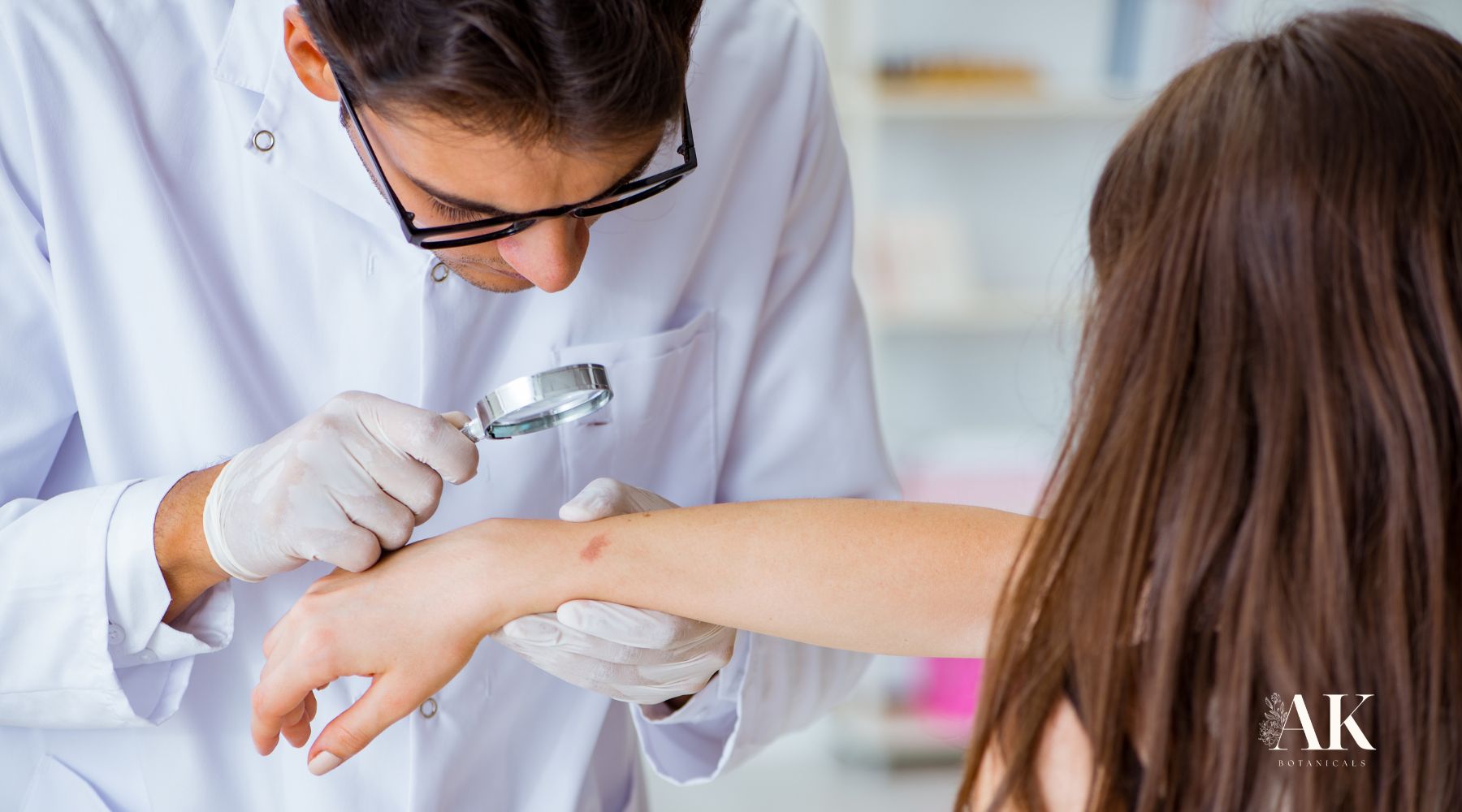
Psoriasis or Actinic Keratosis? Spot the Difference and Support Your Skin Naturally
If you’ve noticed strange, scaly skin, red patches, or rough spots that just won’t go away, you’re not alone. These changes can raise questions about what’s happening on your skin’s surface. They may stem from years of sun exposure—or your body’s own immune response. Learning to distinguish between actinic keratosis and psoriasis can help you make informed choices to support your skin’s well-being.
This guide offers key differences to help you understand what you’re seeing—and how to take the next step toward care and comfort.
What Is Actinic Keratosis? Understanding Sun-Stressed Skin
Actinic keratosis (AK) often develops from long-term sun exposure. These dry, rough patches typically appear on areas like the face, scalp, ears, and forearms—places most exposed to the sun.
They may feel gritty or crusty to the touch and often become more visible over time. Some people experience sensitivity or irritation in these areas, while others may not feel anything at all.
If you notice persistent rough spots—especially in areas that get a lot of sun—consulting a dermatologist is the best next step. Early evaluation helps ensure you're on the right path for care and peace of mind.
What Is Psoriasis? A Look at This Immune-Related Skin Condition
Unlike sun-triggered changes, psoriasis is a chronic condition linked to your immune system. It causes skin cells to renew too quickly, resulting in thick, scaly patches called plaques. These often appear on the scalp, elbows, knees, or lower back and may feel itchy or cracked.
While psoriasis doesn’t stem from sun exposure, it’s often confused with other types of scaling skin issues, especially when symptoms overlap. But the cause, location, and skin texture tend to differ significantly from sun-related concerns.
Quick Guide: Actinic Keratosis vs Psoriasis
|
Feature |
Actinic Keratosis |
Psoriasis |
|
Cause |
Long-term sun exposure |
Autoimmune-related skin cell turnover |
|
Appearance |
Rough, dry patches (may be red or tan) |
Raised, thick plaques with silvery scales |
|
Location |
Face, scalp, ears, forearms (sun-exposed) |
Elbows, knees, scalp, lower back |
|
Texture |
Sandpaper-like, often isolated |
Widespread, symmetrical, inflamed |
|
Concern |
Requires monitoring for changes |
May flare and fade in cycles |
Why They Get Confused
Both conditions can involve dry, flaky, red skin. That’s why it’s easy to mix them up—especially in early stages or when they appear in similar areas like the scalp.
A few signs to watch for:
-
Actinic keratosis often feels rough, like sandpaper, and sticks around in sun-exposed zones.
-
Psoriasis tends to affect both sides of the body evenly and may come with nail pitting or joint discomfort.
Still unsure? A quick visit to your dermatologist can make all the difference.
When to See a Professional
It’s time to check in with a dermatologist if:
-
A patch is growing, changing color, or doesn’t go away
-
You notice cracking, bleeding, or itching that worsens
-
You’re unsure whether it’s psoriasis, sun damage, or something else
A licensed provider can offer clarity, reassurance, and personalized care recommendations.
Botanical Support for Sun-Stressed Skin
If you’re dealing with localized, visibly sun-challenged areas, plant-based skincare may offer gentle support. That’s why we created AKti-Clear—a botanically infused, 3-day topical solution crafted for cosmetic support of sun-exposed, rough skin.
Formulated with ingredients like Sanguinaria canadensis and Annona muricata, AKti-Clear is designed to support your skin’s natural renewal process—especially in areas that show visible signs of cumulative sun exposure.
✳️ Please note: AKti-Clear is not intended to treat, cure, or prevent any medical condition. Always consult your dermatologist before using new skincare products—especially if you have a diagnosed skin condition.
How to Support Your Skin Every Day
No matter what your skin is dealing with, these habits help support its natural resilience:
-
Use broad-spectrum SPF every day—even when it’s cloudy
-
Cover up with hats, long sleeves, and sunglasses
-
Moisturize consistently to maintain your skin barrier
-
Stay hydrated and eat antioxidant-rich foods
-
Avoid smoking, limit alcohol, and prioritize restful sleep
-
Examine your skin regularly for any new or changing spots
Clarity Leads to Confidence
Knowing the difference between actinic keratosis and psoriasis empowers you to make better decisions for your skin. One stems from sun exposure, the other from your immune system. One is tied to changes in appearance; the other may affect how your skin feels and behaves long-term.
If you’re working to support visibly sun-stressed skin, AKti-Clear offers a plant-powered option that aligns with a natural, skin-respecting philosophy—without harsh chemicals or synthetic ingredients.
Disclaimer:
AKti-Clear is not intended to diagnose, treat, cure, or prevent any disease. It is formulated to support the appearance of sun-exposed, rough skin. Consult your licensed healthcare provider for medical guidance related to skin conditions.




